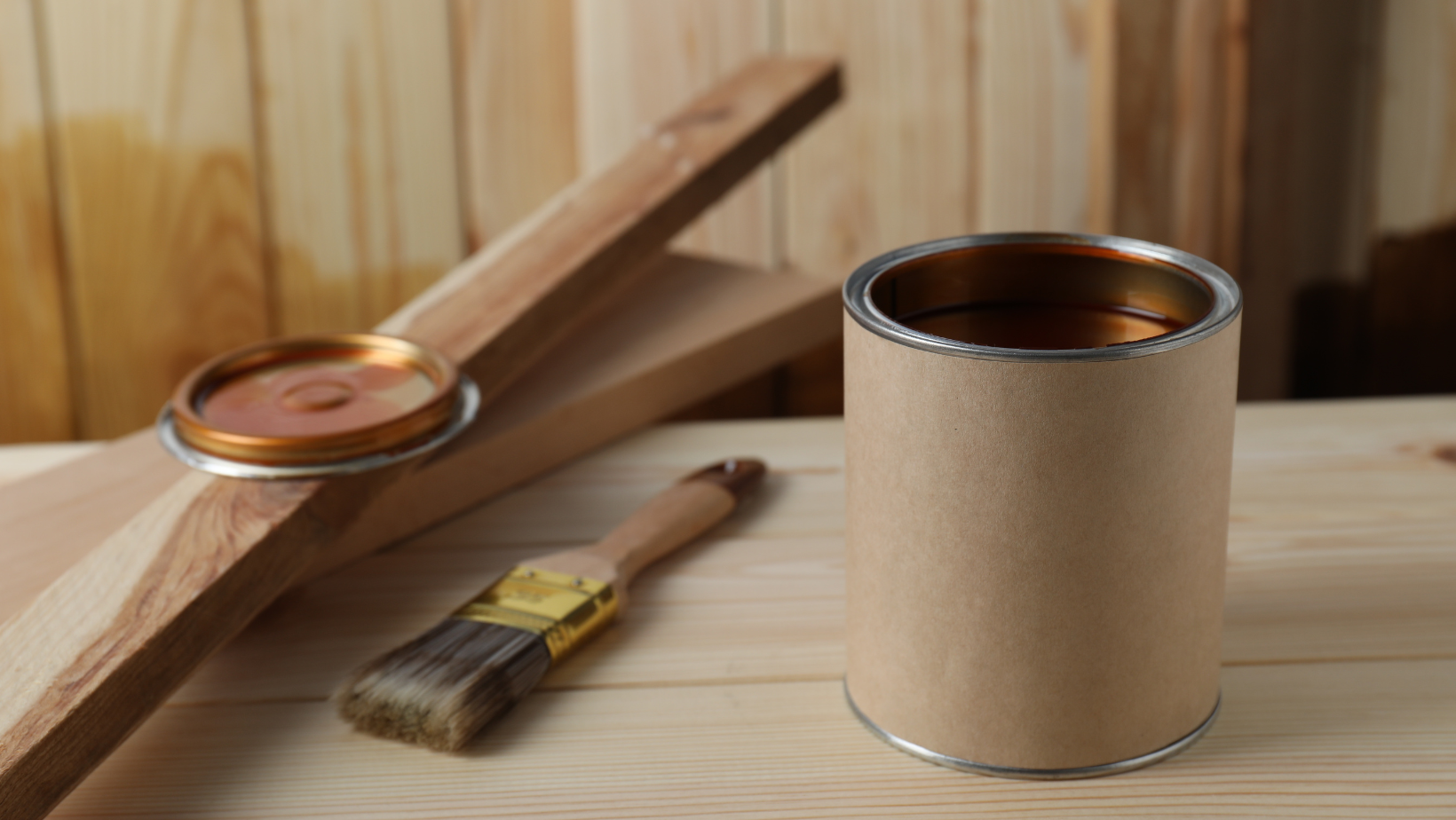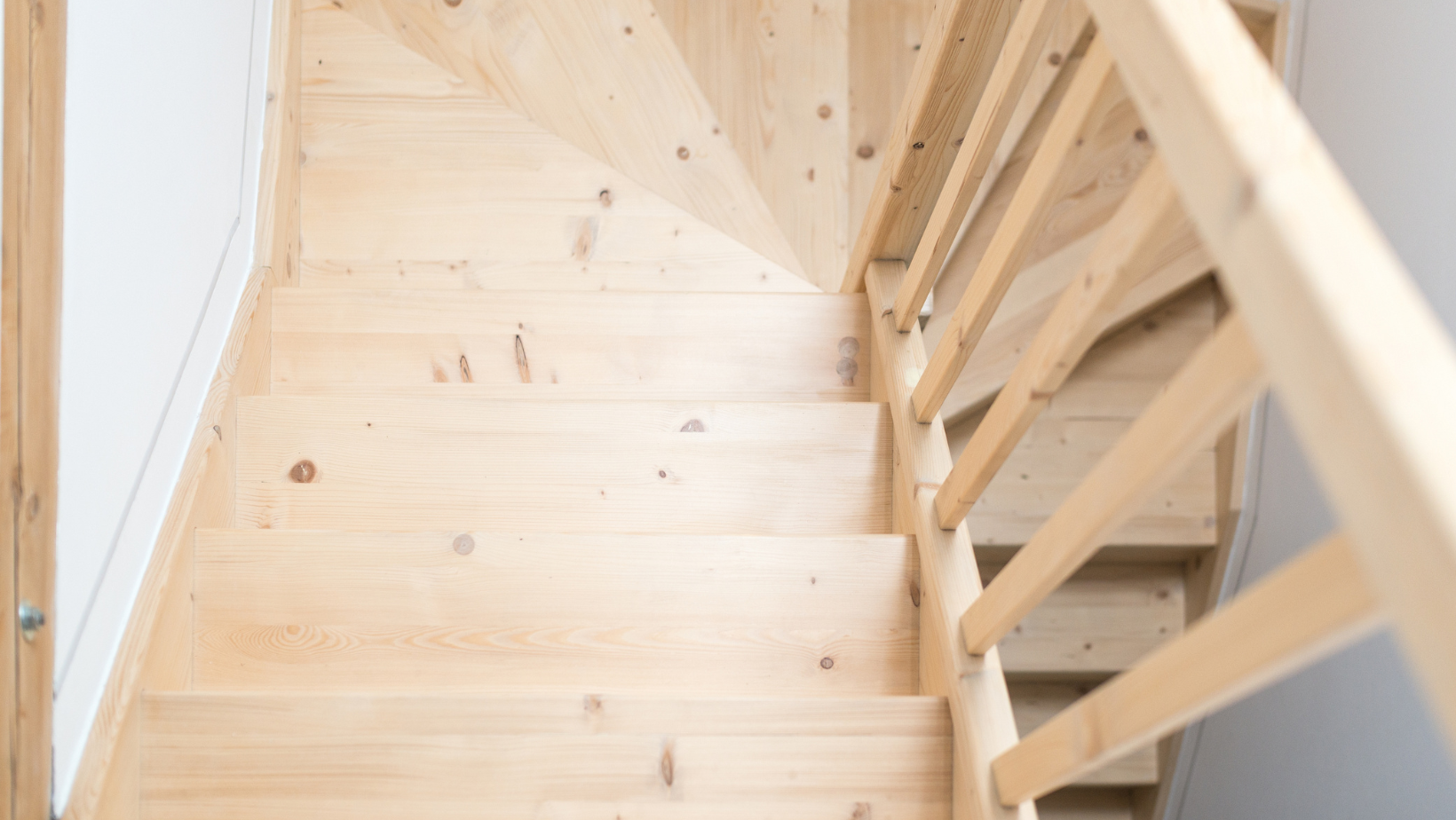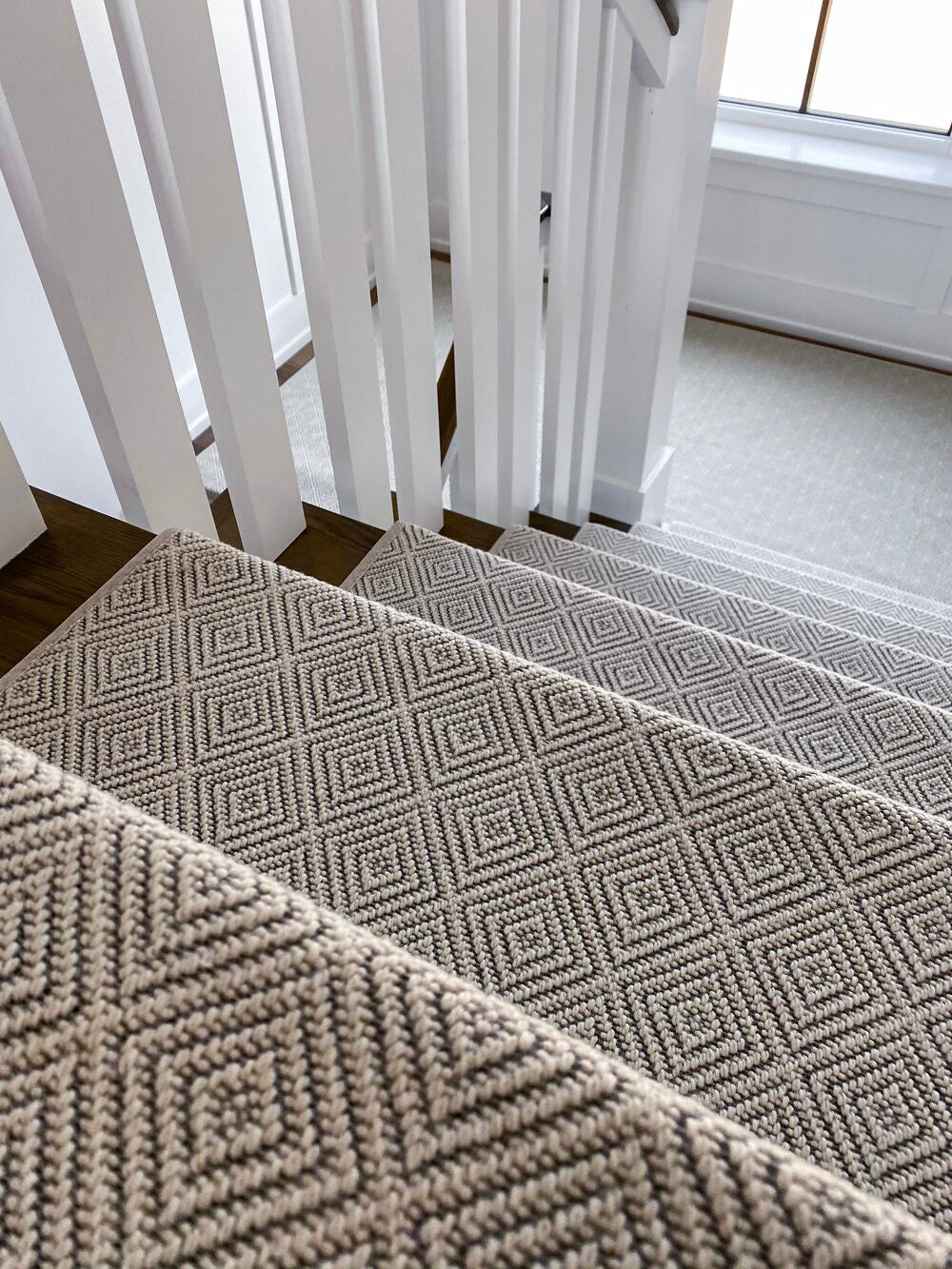Do you use polyurethane on stair treads to protect and enhance their durability?
Applying polyurethane adds a strong protective layer that helps prevent scratches and moisture damage.
If you have carpet stair treads, be sure to tape them up before starting to avoid any unwanted stains.
Polyurethane also enhances the natural beauty of wooden stairs by adding a smooth, polished finish.
It works well on both hardwood and softwood stair treads, providing long-lasting protection.
Whether you're refinishing old stairs or protecting new ones, polyurethane is a reliable choice.
Can You Use Polyurethane On Stair Treads?
Yes, you absolutely can. Applying polyurethane to stair treads is crucial for protection, durability, and aesthetics.
If you have a carpet runner or carpet stair treads in place, be sure to tape them up before applying polyurethane to prevent damage.
Whether you’re working with hardwood or softwood, polyurethane provides a long-lasting and resilient finish that shields the wood from moisture, scuffs, and general wear.
Factors to Consider Before Applying Polyurethane
Before applying polyurethane, there are several key factors to keep in mind.
Understanding these will ensure you get the best results and long-lasting protection for your stair treads.
Importance of Protection
Stair treads endure constant foot traffic, making them susceptible to wear and tear.
Polyurethane forms a protective barrier that prevents scratches, dents, and other damage, extending the life of the wood.
If your stairs see heavy use from pets or children, polyurethane is a great way to keep them looking new for years to come.
Durability and Longevity
Polyurethane is highly durable, making it ideal for high-traffic areas like staircases.
It helps maintain the strength and appearance of your stair treads even with daily use.
Oil-based polyurethane is especially resilient, as it creates a harder finish, while water-based polyurethane offers a clear and natural look.
Aesthetic Enhancement
Beyond protection, polyurethane enhances the wood’s natural beauty.
It provides a glossy or satin finish that highlights the grain and color, giving your stairs a polished and elegant look.
If you prefer a more muted, natural appearance, water-based polyurethane offers a low-sheen finish without the amber tone of oil-based products.
How to Polyurethane Stair Treads
If you're wondering how to polyurethane stair treads for the best results, following the correct process is essential.
Applying polyurethane is a straightforward but meticulous process that requires patience and the right techniques.
Surface Preparation
Before applying polyurethane, sand the stair treads thoroughly to create a smooth, even surface.
This removes imperfections, old finishes, and ensures better adhesion.
Start with medium-grit sandpaper (such as 120-grit) and finish with fine-grit sandpaper (220-grit) for a perfectly smooth base.
After sanding, wipe the stairs with a tack cloth to remove any dust.
Choosing the Right Polyurethane
There are two types of polyurethane to consider:
-
Oil-Based Polyurethane: Provides a rich, amber-like finish and is easier to apply but takes longer to dry. It offers superior durability, making it ideal for high-traffic staircases.
-
Water-Based Polyurethane: Dries faster and has lower volatile organic compound (VOC) levels, making it a more eco-friendly option. It retains the wood’s natural color, which is great if you want to avoid the slight yellowing effect of oil-based polyurethane.
Applying Polyurethane
Use long, even strokes with a high-quality brush or foam applicator to ensure a smooth and consistent finish.
Apply multiple thin coats rather than a single thick layer to avoid drips and uneven coverage.
Allow each coat to dry before sanding lightly with fine-grit sandpaper (320-grit). This helps create a perfectly smooth finish between coats.
Drying and Curing Time
Allow each coat to dry completely before applying the next.
Drying times vary based on temperature, humidity, and the type of polyurethane used.
Water-based polyurethane typically dries within a few hours, while oil-based polyurethane can take 24 hours per coat.
For best results, let the final coat cure for at least 72 hours before using the stairs.
Compatibility of Polyurethane with Different Wood Species
Not all wood species react the same way to polyurethane.
Understanding compatibility ensures you get the best finish.
Hardwood vs. Softwood
Hardwoods like oak and maple absorb polyurethane evenly and provide a smooth finish.
Softwoods like pine and cedar may need a wood conditioner before application to prevent blotchiness.
Hardwoods tend to work well with both oil-based and water-based polyurethane, while softwoods often benefit from water-based polyurethane due to its thinner consistency.
Popular Wood Species and Their Compatibility
Some wood species require additional considerations:
-
Cherry Wood: Darkens over time when exposed to sunlight. Using UV-resistant polyurethane can help maintain its color.
-
Pine: More porous and prone to uneven absorption. A pre-stain wood conditioner can help.
-
Maple: A dense wood that sometimes resists polyurethane absorption. Multiple thin coats work best.
-
Oak: One of the best woods for polyurethane application, as it absorbs evenly and provides a beautiful finish.
Tips for Ensuring Compatibility
Test a small, hidden area before applying polyurethane to the entire stair tread.
This ensures the polyurethane adheres properly and produces the desired finish.
If the wood absorbs polyurethane too quickly, consider using a wood conditioner first.
Common Mistakes to Avoid When Applying Polyurethane
Even though applying polyurethane seems straightforward, there are several mistakes that can lead to a subpar finish.
Skipping Sanding Between Coats
Sanding between coats ensures a smooth, professional finish.
If you skip this step, you may end up with a rough texture or uneven sheen.
Applying Too Thick of a Coat
Thick coats take longer to dry and can lead to drips, bubbles, or an uneven finish.
Always apply multiple thin coats for the best results.
Not Allowing Proper Drying Time
Rushing the drying process can ruin the finish.
Avoid walking on the stairs too soon, as this can leave marks and indentations.
Using the Wrong Type of Brush
A high-quality synthetic bristle brush or foam applicator is best for applying polyurethane.
Cheap brushes can leave streaks or bristles in the finish.
Maintenance and Long-Term Care of Polyurethane-Coated Stair Treads
Once your stair treads are coated in polyurethane, regular maintenance will keep them looking great for years.
Cleaning and Upkeep
Use a mild wood cleaner or a damp microfiber cloth to clean polyurethane-coated stairs.
Avoid harsh chemicals or abrasive scrubbing pads, as these can wear down the finish over time.
Reapplying Polyurethane
Over time, stair treads may show signs of wear, especially in high-traffic areas.
Applying a fresh coat of polyurethane every few years can help maintain the protective layer and keep your stairs looking new.
Stepping It Up
Using polyurethane on stair treads is an effective way to protect them from daily wear.
It helps maintain their appearance while preventing damage over time.
If you're wondering, do you use polyurethane on stair treads?—the answer is yes, and it's a smart investment for long-term durability.
Proper care will extend the life of your finished stair treads and keep them looking new.
Regular cleaning and occasional reapplication will ensure lasting protection.
To further enhance safety and style, consider adding carpet stair treads for extra grip and comfort.
Contact Ust Today!
Enhance the beauty and durability of your stairs with high-quality carpet stair treads.
Oak Valley Designs offers stylish and functional solutions to complement your home.
-
Website: https://oakvalleydesigns.com/
-
Phone: 706.331.0315
-
Email: info@oakvalleydesigns.com
-
Address: 30 River Ct SW Bldg E Cartersville, Ga 30120




